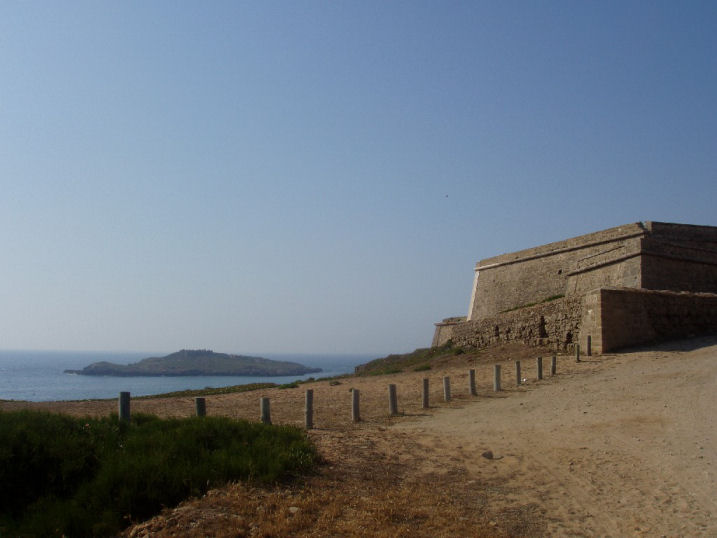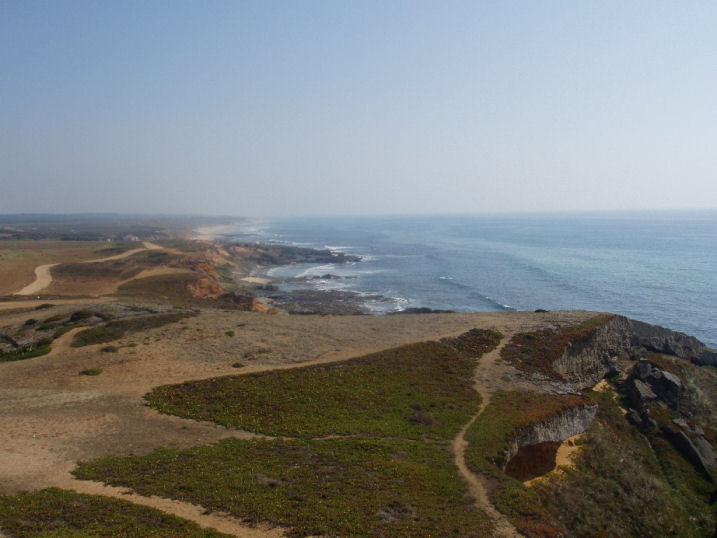 Português
Português
A cache
A cache é um tupperware rectangular com cerca de 20x10cm e tem
como conteúdos iniciais:
- Stashnote
- Logbook e caneta
- porta-chaves holograma
- Apito imitador de pássaros
- lanterna
O local
A construção foi inicada pelo arquitecto Filipe Terzi em 1588
sob ordens do cardeal Alberto, vice-rei sob Filipe II (I de
Portugal). O plano inicial compreendia dois fortes, um no
continente e outro na ilha do pessegueiro (ou penedo do cavalo como
era conhecida na altura) e um paredão artificial que permitiria o
canal ser usado como porto artificial.
Em 1590 as construções passam a ser dirigidas por Alexandre
Massay e continuam assim até 1598 quando este tem de passar a
construir um forte para defesa da barra do rio Mira, em Vila Nova
de Milfontes. As construções continuam intermitentemente até 1690,
data em que o forte principal fica concluído. No entanto o forte da
ilha e o paredão nunca são concluídos.
A Ilha do Pessegueiro foi ocupada desde o século III a.C. pelos
cartagineses. No século I a.C. os romanos ocuparam-na construindo
um porto do qual existem ainda vestígios. Progressivamente a sua
importância como centro portuário foi decaindo passando a ser
utilizada como centro para salga de peixe. Para visitar estes
vestígios e as ruínas do forte inacabado vejam este link.
(Obrigado caixeiros).
Em 1755 o terramoto danifica partes do forte. Entre 1877 e 1942
a Guarda Fiscal usou o mesmo como base.
Podem ainda ser vistos, a Sul do forte os vestígios da
construção do paredão artificial nos grandes cortes efectuados na
pedra.
 English
English
The cache
The cache is a rectangular tupperware of about 20x10cm in size
and had initially:
- Stashnote
- Logbook and pen
- hologram key-holder
- bird whistle
- flashlight
The Location
The construction was initiated by the arquitect Filipe Terzi in
1588 under orders of cardinal Alberto, vice-roy under Filipe II (I
of Portugal). The initial plans included 2 forts, one in the
mainland and another on pessegueiro island (or horse rock as it was
known at the time) and an artificial dam which would allow the
canal to be used as an artificial harbour.
In 1590 the work was directed by Alexandre Massay and continued
so until 1598 when he had to go supervize a fort for the defense of
the Mira river's mouth in Vila Nova de Milfontes. The work
continues intermitently until 1690, when the main fort is finished
but the island fort and the sea wall are never finished.
The Pessegueiro island was ocuppied since the III century b.C.
by the carthagians. In the I century b.C. the romans ocuppied it
and built an harbour of which can still be seen remains today.
Progressively its importance as an harbour center declined and it's
main asset was the salting of fish. To visit these ancient ruins
and the old unfinished fort visit this link.
(Thank you caixeiros).
In 1755 the earthquake damages parts of the fort. Between 1877
and 1942 the Fiscal Guard used it as a post.
There can still be found, south of the fort, the vestiges of the
construction of the man-made wall in the big cust performed on the
rock.